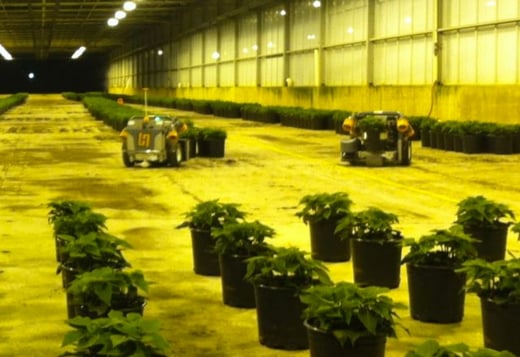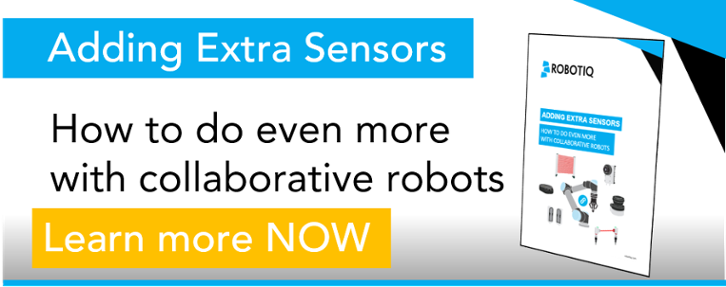3 Robot Farmhands Disrupting Rural Life

While food prices continue to rise, there is no denying the need for affordable investments that will keep the costs of food production down. As we see prices rise in the stores, most of us, having never produced our own food, have no clue what it takes on the other end of the pipeline to bring our food to the table, especially in a highly industrialized system. What we don’t often consider when we complain about our long and expensive grocery receipts is the labor, fuel, packaging, logistics and much more that takes place behind the scenes to fill up our overflowing supermarket displays with shiny and colorful produce from around the world.

The complex industry of agriculture is one of the most likely to expand their use of automation with open arms in the coming years, and there are many companies working towards this goal. From robocopters to cattle herding robots, you might wonder how robots fit into rural life, and the answer is, quite seamlessly.
3 Robot Farmhands Disrupting Rural Life
- Harvest Automation
This Massachusetts robotics startup company is not your run-of-the-mill team, but is headed by Joe Jones, former employee of iRobot and inventor of the Roomba. It’s no surprise then that, although Harvest Automation started by simply querying potential markets for a new product to fit into, they came up with a single successful application and plan to expand their technology from there. The harvest robot is designed to work within the predictable and simple confines of wholesale shrub farms. While an outdoor application may not seem like the easiest place to start, the impact the Harvest robots can have doing the simple task of moving potted plants from point A to point B on such a huge scale is amazing.
These farms can have as many as 3 million containers that need to be evenly spaced, and respaced as they grow. With experience in using simple mapping software to allow robots to autonomously perform tasks in a known environment, Harvest robots can work around the clock without vacation or time off, making the $25,000 to $50,000 investment worth it after the first year. Now in beta on the East Coast, Harvest plans to expand further into warehousing and manufacturing, both potential uses in the larger pipeline of food production and logistics, where you will already find automation tools like Universal Robots paired with Robotiq Two Finger Grippers hard at work.
- Yamaha RoboCopter RMAX
Drones have long been on the horizon of agriculture with so much potential for surveying large parcels of land from the air, as opposed to the huge task of traversing that land by foot or tractor. Many large companies have R&D teams in this field looking to find applications for this technology in our farm fields, and Yamaha is focusing specifically on Vineyards. Working in collaboration with UC Davis, Yamaha's RMAX robocopter is designed to help vintners with the tedious task of spraying their crops. Often set on hillsides that are hard to navigate in a tractor, the RMAX is able to spray 6 acres of vineyard in the time it would take a tractor to complete one. This robocopter is capable of carrying a 25 kg payload and could also be used to keep crops from freezing during the cold months at the highest altitudes.
This technology is a very effective tool for high value crops like Napa Valley’s famous grapes, but does have a ways to go in development to make it viable. For starters it is not yet autonomous. While it can hover in place without a human controller, to do any real work like spraying crops it requires a three-man flight team to control it from the ground. Because it is being controlled from the ground its efficiency is also diminished as the humans are left to try and navigate difficult terrain without being in the air themselves. While these seem like big hurdles to overcome, the inevitability of this technology being used in agriculture keeps companies like Yamaha invested in development.
- SwagBot
No, that’s not a typo. SwagBot is a real thing, and was named by Australians after the term for rancher down under. A swagman is an Australian or New Zealander who travels from ranch to ranch performing various farming activities like surveying land, herding cattle and other rugged ranch undertakings that are messy, laborious and sometimes dangerous. The SwagBot is the autonomous rancher that has the ability to do all of the above in the rugged landscape of Australian farmland and can even collaborate with drones for better visibility and mapping. It was designed and is being tested by the University of Sydney professor, Dr. Salah Sukkarieh. It is an all-terrain robot that can traverse almost anything as an assistant farmhand. Though it is human operated at this stage of testing, using vision for animal tracking and land observation, the plan is to take into full autonomy in the coming years.
These three compelling and complex robot farmers are not ready to be deployed but other automation tools like the above mentioned robot arms and two finger Grippers as well as sensors are industry ready for farming applications. When farmers begin to adapt these preliminary automation tools to reduce human labor, the learning curve will be reduced as the technology on the farm becomes more versatile.







Leave a comment